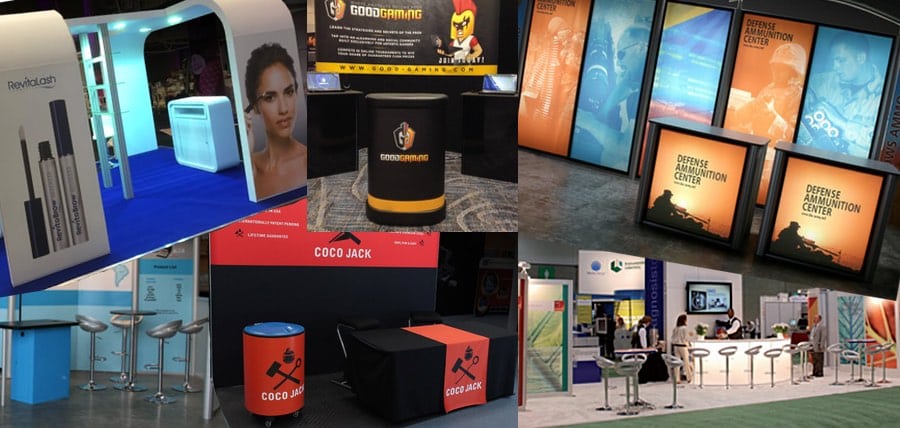Maximizing ROI at Trade Shows: Strategies for Success
Maximizing ROI at trade shows requires careful planning, effective execution, and strategic follow-up. By setting clear objectives

Trade shows are an excellent way for businesses to connect with customers, showcase their products, and build relationships. However, maximizing the return on investment (ROI) from these events requires more than just showing up with a booth. Effective planning, engagement, and follow-up strategies can make a significant difference. In this article, we’ll explore key strategies to ensure you get the most out of your exhibits and displays at trade shows.
Setting Clear Objectives
Before you dive into the preparation process, it’s essential to define your goals. Clear objectives will provide direction for your trade show strategy and serve as a benchmark for measuring success. Some common goals might include:
- Lead generation: How many quality leads do you hope to collect?
- Brand Awareness: How Can You Increase Visibility for Your Company or Product?
- Networking: Who do you need to connect with for future business collaborations?
By setting specific goals, you can evaluate the performance of your trade show efforts and determine if your investment was worthwhile.
Pre-Event Planning: The Key to Success
Effective pre-show marketing is crucial for ensuring your presence is known before the event. Use multiple channels to inform your audience about your participation and make plans to engage with them:
- Email marketing: Send out invitations or reminders to existing clients and prospects.
- Social media: Create posts or ads to build anticipation around your booth or product launches.
- Scheduled meetings: Schedule appointments with key decision-makers in advance to ensure you maximize your time at the event.
This proactive approach sets the stage for a successful event and ensures that you’re not wasting valuable time on unqualified leads.
Designing an Engaging Booth
Your exhibits and displays are the first point of contact with attendees, and they should be designed to grab attention. Consider the following design tips to create an engaging booth:
- Eye-catching displays: Invest in high-quality, visually appealing displays that reflect your brand’s image.
- Interactive elements: Incorporate technology or demonstrations that encourage attendee interaction, such as live product demos or touchscreens.
- Clear messaging: Ensure your booth clearly and concisely communicates who you are and what problem your product solves.
An engaging booth design will attract attendees, prompting them to visit and learn more about your offerings.
Qualifying and Capturing Leads
While gathering leads is a primary objective of trade shows, it’s essential to prioritize quality over quantity. Instead of collecting business cards and hoping for the best, implement a systematic lead capture approach:
- Utilize lead capture technology: Tools such as scanning devices or apps can help quickly capture contact details and specific interests.
- Ask qualifying questions: Engage with prospects by asking questions that help determine their potential as a buyer, such as their budget, timeline, and decision-making process.
- Prioritize high-quality leads: Not every attendee will be a fit for your business, so focus on those who show genuine interest.
The quality of your leads will determine the long-term success of your trade show participation.
Post-Event Follow-Up: Turning Leads Into Sales
The follow-up process is just as critical as the trade show itself. After collecting leads, make sure to follow up promptly:
- Timely follow-ups: Contact leads within 48 hours while the interaction is still fresh in their minds.
- Personalized messages: Refer to specific conversations you had with the lead to demonstrate your genuine interest in their needs.
- Additional value: Offer additional resources, such as case studies, brochures, or product samples, to help move the lead further down the sales funnel.
A strong follow-up strategy is essential for converting leads into sales and ultimately maximizing ROI.
Measuring ROI and Analyzing Results
Once the event is over, measuring your ROI is crucial to understanding the impact of your trade show efforts. Some metrics to track include:
- Revenue: How much revenue was generated directly from the event?
- Leads: How many quality leads were collected and converted into customers?
- Brand exposure: Consider social media mentions, website traffic, or press coverage gained as a result of the event.
- Networking value: Evaluate the partnerships or collaborations formed as a result of attending.
By comparing the results to your initial goals, you can calculate the overall ROI and refine your strategy for future trade shows.
Conclusion
Maximizing ROI at trade shows requires careful planning, effective execution, and strategic follow-up. By setting clear objectives, designing engaging exhibits and displays, capturing high-quality leads, and following up promptly, businesses can turn trade show participation into a profitable investment. With these strategies, you’ll not only achieve a better ROI but also foster lasting relationships and enhance brand visibility. Trade shows can be a valuable tool for growth, and with the right approach, you can make the most of every opportunity.





